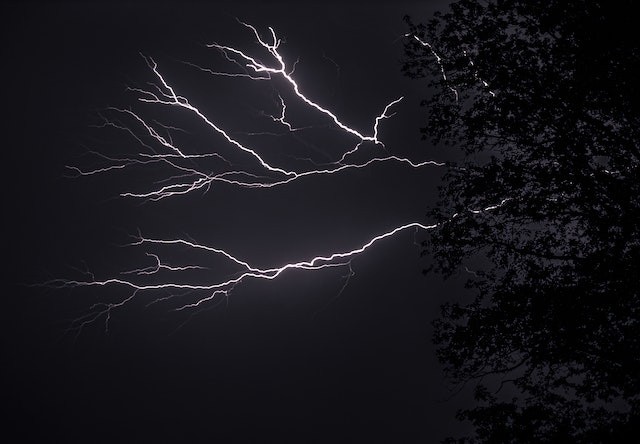
Have you seen someone with lightning strike scars? The injury leaves them with tattoo-like markings with patterns known as fractals.
Lightning Strike Scars
The skin of a person struck by lightning usually changes as the injury could leave markings on their body. A Lichtenberg figure, often known as a tattoo-like scar, can occasionally be left behind by an electrical discharge. The patterns generated are recognized as fractals.
Winston Kemp earned the intricate body art when lightning struck him during a spring storm after he went outside to save his pumpkins. He said he saw something bright and heard a loud noise in his neighbor's backyard. He didn't feel a thing, but shortly after he came inside his house, he noticed that his arm was sore and there were markings on his body.
He wasn't hurt when it happened, but a few hours later, his arms felt achy. He also noticed big blisters forming on his skin the next day. His girlfriend, a pre-med student, lanced and covered them to prevent infection.
Lightning strikes often leave one with deep wounds and third-degree burns. The hair or clothing might catch fire. It could rupture the eardrums, leading to hearing loss and, worse - cause seizures or respiratory arrest. Being struck by lightning can be fatal.
Several netizens shared a peek of their lightning strike scars on X (formerly Twitter). Although they appear different if you look closely, it has the same pattern - the scars are like branches of trees or lines. Some said it looked like a fern leaf.
lightning strike scar to match eddie’s bullet wounds pic.twitter.com/oyq8rSJLWL
— kaelyn (@EDDIEBEGlNS) March 4, 2023
This is a lightning strike scar😳😣😣😣 pic.twitter.com/9OQsdXy6Ew
— Drinkwine (@DrinkwineAusten) April 30, 2014
"Lichtenberg Figure" Scar left by a lightning strike on a person. pic.twitter.com/PRqmB52eO9
— 한니코🌙 (@Nicocococococo) November 25, 2013
Why Lichtenberg Figures Appear After on Skin After Lightning Strike
Lichtenberg figures are branching electric discharges that become visible on the surface or inside some insulating materials. This scar pattern spreads across the body like a tree's limbs, probably depicting the course the electricity took as it passed through the body.
They were first identified and investigated by a German physicist named Georg Christoph Lichtenberg, who gave them their name. When they were originally found, it was believed that their distinctive shapes would serve to expose the characteristics of positive and negative electric "fluids." The arms, back, neck, chest, or shoulders of lightning strike victims are the most common sites for these spectacular "keraunographic" scars, which are also known as "lightning flowers" or "lightning trees."
According to Dr. Mathew Avram, the Dermatology Laser and Cosmetic Center director at Massachusetts General Hospital in Boston, the feathering markings are caused by static electricity traveling through the superficial blood veins that supply the skin. He added that when an emergency room physician sees these marks, they will immediately recognize the diagnosis - a lightning strike.
Avram said they are uncommon; the only sign is a superficial burn on the skin's surface. The fern-leaf patterns will be more pronounced if the wearer happens to be wearing a belt buckle or if they sweat a lot when lightning strikes.
Kemp said he still felt random pains in his arm, and his skin was tender a month after the incident. According to Avram, it wasn't surprising because when the skin is injured, one usually experiences nerve sensation afterward, and the redness from the burn may persist for months.
Check out more news info about Lightning Strikes in Science Times.











